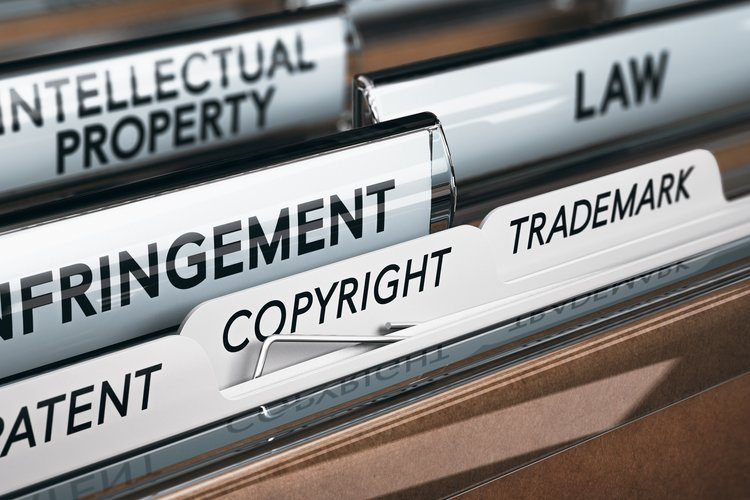Guide To Australian Copyright Basics

This guide introduces the basics of copyright in Australia and offers some basic guidelines as to how to avoid breaching copyright law.
This guide is intended to be a useful overview, but it must be noted that copyright and other intellectual property laws are complex areas of law and expert advice and guidance is always recommended.
Copyright in Australia is governed by the Copyright Act 1968. Australia is also party to several international copyright treaties and conventions and has several free trade agreements with individual countries and groups of countries which usually include agreed rules on copyright. We’ll discuss overseas copyright protection in more detail further in this guide.
What is copyright?
Many people are surprised to learn that copyright does not protect thoughts, ideas or concepts. Copyright words generally need to be recorded in some form as copyright law tends to protect the tangible expression of an idea (rather than the idea itself).
Copyright is a type of intellectual property which is automatically applied over the creation of original work, where such work is deemed a work for copyright purposes, and which provides exclusive economic and moral rights to the originator of a particular piece of work.
Typically, works that are covered by copyright include writing, visual and moving images, dramatic works, computer software code, music and sound recordings. Copyright generally provides the originator or owner of the original work with the right to communicate the work to the public, reproduce it, copy and publish it.
You may find this guide to all types of intellectual property useful as further background to copyright, trade marks etc.
What isn’t considered copyright?
Now that we know what copyright is, let’s look at what is not considered copyright.
As mentioned, copyright applies to the expression of ideas and concepts. It does not protect the idea or concept itself.
Let’s say someone has an idea for a book. It is only when that idea is crystallised in written form that copyright automatically applies to that written version of the idea. Someone else may be able to take that same idea and produce an original work in their own words and they then would own the copyright to their version. However, if they were to copy substantial or important parts of the original work verbatim, that could constitute copyright infringement.
Names and titles are generally not considered sufficiently original to be protected by copyright. Rather, distinctive names (such as brand names) might be registrable as trade marks.
Individuals and their images are also not protected by copyright, but copyright exists in a photograph of a person. The following example may help to illustrate this tricky concept. A person may not use or reproduce another person’s photograph without the express permission of the person who owns the copyright to that image (ie often the photographer). Copyright is not attached to the image of the person or people in the image, but rests with the owner of the physical photograph.
Some countries may have separate laws to protect images of persons. In Australia, using the image of a well-known person for commercial gain may, for example, amount to misleading or deceptive conduct as is prohibited by Australian Consumer law.
This brings us to the next topic, ie that of who owns copyright.
Who is considered the ‘owner’ of the copyright?
As a general rule, the original creator of an original piece of work is considered to own the copyright.
However, there are situations where copyright rests with someone else or another entity other than the original creator. In Australia, these may include:
- Where an employee creates works during the time that they are employed. The employer would generally own the copyright to those works.
- Where a freelancer is commissioned to create a work for a specific purpose (eg a photographer or copywriter). The person commissioning the work will generally have the right to use and publish the work for that nominated purpose, but copyright will remain with the freelancer.
- Where sound and film works are created, copyright is generally owned by the person who paid for the works to be made. Sometimes, the artists involved in the production of the recordings will own a share in the copyright for the works.
How is copyright ownership proved?
As discussed, copyright is automatic on the tangible expression of an idea. There’s no paperwork or registration required, no fees payable etc.
However, this can sometimes mean that proving ownership is challenging.
The following tips are useful for content creators in the event of their copyright ownership being called into question or if they are considering taking action against infringers:
- Keep dated records of the entire content creation process and timeline
- Where appropriate, discuss drafts with other people so that they are ‘witnesses’ to your whole creation process
- Be meticulous about keeping any paperwork, particularly dated paperwork, which alludes to the fact that you are the originator/owner of the idea
- Email yourself a copy of the copyrighted item
- Use the copyright symbol © with date of creation on your original works wherever possible
The copyright symbol is a clear indication to the public that a work is protected by copyright laws and serves as a warning to potential copycats. When it appears on a work, it makes it difficult for an infringer to claim ignorance.
The above list does not create copyright ownership per se but are useful ways to ensure dated proof as to creation of the works exists.
Is my work protected by copyright overseas?
Copyright laws vary around the world, but a lot of the overall concepts are the same.
In most instances, this allows for original work created in Australia to be protected in other countries (automatically) and overseas copyright material to be protected in Australia. Some countries, such as the USA, may require a copyright owner to register the work before being able to take formal legal action against others for copyright infringement. However, nothing is cast in stone and if copyright of your work is important to you, you should be aware of the competitive landscape.
Globalisation, the blurring of borders as a result of digital communications and the sheer vastness of online material can lead to a false sense of security that ‘everyone is copying everyone else’s work’ and that prosecution for copyright infringements is impossible. But it’s not. Always take care of your work and avoid plagiarising or copying anyone else’s.
The Australian Copyright Council is a useful resource for creators wanting more information on international copyright protection.
Copyright law infringement
Copyright law is complex.
As a starting point, let’s recap the exclusive rights that copyright law gives to the creators of original works. Such rights include:
- The right to reproduce the work
- The right to make the work public eg through public performances, transmissions, recitals etc
- The right to be paid by others to use the work eg in translations, public performances etc
- The right to make adaptations of the work
- The right to communicate the work to the public and to rent out items containing their original work (eg on a CD or DVD)
Infringement occurs when the creator of the original work (ie the copyright owner) does not give permission to a third party to do any of the above or to incorporate in their own materials without permission (unless an exemption applies).
An example of copyright infringement could be when a person makes a copy of someone’s book without their consent.
To avoid the risk of infringing on another’s rights, it is always advisable to seek permission before doing anything with another person’s work.
There are also situations when using someone else’s copyright – or using a part of their copyright – is not considered infringing. Examples where the use of copyright material can be used without permission include research or study, news reporting, parody and satire or the.
It is also important to understand that there are many ways that people can defend allegations of copyright infringement, including on grounds of interpretation and the degree of alleged infringement.
Professional advice from a qualified professional is always the best route to help you determine the right course of action.
What MMW Trade Mark Services can do to help
We hope this guide to Australian copyright basics has been useful, and we would be more than happy to answer any questions about copyright.
Our highly experienced trade marks attorney can help with any aspect of trade mark and can often assist in relation to copyright law, including assisting with with dispute resolution if you believe your copyright has been infringed. Please get in touch with the friendly team at MMW Trade Mark Services via our website or by calling 03 8288 1432.

